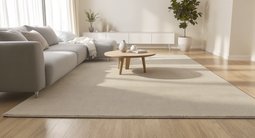TL;DR
Interactive floor plans bridge the gap between property photos and reality by letting buyers explore layouts, measure spaces, and visualize flow on any device. Agents using interactive floor plans for real estate listings report 2–3x more engagement and faster, better-qualified showings.
Why interactive floor plans now

Mobile-optimized interactive floor plans boost buyer engagement and confidence on the go.
Picture a buyer scrolling listings on a phone. Photos look great, but the layout is a mystery. With an interactive floor plan, that buyer pinches, swipes, and taps through the property—seeing room-to-room flow, checking measurements, and deciding in minutes whether it fits their life. That immediacy is why interactive floor plans are reshaping real estate marketing. Agents say listings with interactive floor plans draw 2–3 times more engagement and convert more efficiently into showings. In an inventory-tight market, that lift matters: attention turns into inquiries; clarity turns into confidence. And because over 70% of property search happens on mobile, mobile-optimized, touch-friendly floor plans are no longer a nice-to-have—they’re table stakes for modern real estate marketing. Alt text: A phone screen showing a tappable 3D plan with hotspots for kitchen, living room, and patio. Caption: Buyers spend longer on listings when they can explore the layout themselves.
How interactive floor plans work (and where they win)
Homes with interactive floor plans often sell faster because buyers self-qualify before they ever book a tour, agents note. Here’s how the best versions work, and why they matter: - The engine: A browser-based viewer—no plugins—hosts a 2D or 3D plan with clickable hotspots, room labels, and measurement tools. Well-implemented viewers load in under 3 seconds on LTE and use progressive loading to keep navigation smooth. - 3D visualization: Moving from 2D to 3D helps buyers grasp ceiling heights, sight lines, and light. Market analysts report that 3D-enabled listings keep buyers engaged 40–60% longer than photo-only pages. - VR-ready options: For serious clients, true-to-scale VR walkthroughs deepen immersion. Agents who offer VR say those buyers arrive at showings with specific, high-intent questions—saving time for all parties. - Mobile-first design: Touch-friendly gestures, large tap targets, and simple menus reduce friction. A rule of thumb: if the plan isn’t usable one-handed on a small screen, it’s not ready for market. - Cloud hosting and analytics: Cloud delivery ensures fast loads globally and uptime during traffic spikes. Built-in analytics reveal which rooms buyers view, where they drop off, and how often they measure spaces—insight that informs pricing conversations and staging. - Seamless media integration: The floor plan acts as the hub for property photos, 360s, and video. Hotspots should match your strongest photo angles so buyers can jump naturally between plan and imagery. - MLS and website compatibility: Many MLS platforms accept links or simplified embeds. Best practice is dual outputs: a full-featured version for your site and a lightweight version or static frames for MLS. Agents often see 20–30% higher click-through when the MLS link label clearly states “Interactive Floor Plan.” Costs vary by depth and property size. Professionals peg typical spend at $250–$600 for robust 2D/3D with hotspots, and $1,000–$2,000 for VR-ready packages with advanced analytics. Many teams recoup that in one faster sale or a single price reduction avoided.
Anecdote
An investor weighing two condos couldn’t visualize scale from photos alone. The agent shared an interactive plan with a sofa overlay and balcony measurements; the buyer saw their sectional fit and made an offer that afternoon—beating out a competing bid by acting faster.
Common mistakes with interactive floor plans
Experts warn that realism and trust drive conversions—missteps can erode both. - Over-polishing visuals: Overly glossy renders feel fake. Fix: keep finishes and lighting believable so buyers recognize the property on arrival. - Ignoring mobile: If tap targets are tiny or load times exceed 5 seconds, abandonment spikes. Fix: test on midrange phones over cellular data. - Misaligned media: When photos don’t match the floor plan angles, buyers get disoriented. Fix: shoot anchor images from the same vantage points used in the plan. - Missing measurements: Buyers want sofa, bed, and table fit. Fix: include room dimensions and a quick-measure tool; agents say this single feature cuts layout questions by half. - No MLS strategy: Dropping only a long URL wastes clicks. Fix: use a branded short link and a clear CTA like “Open Interactive Floor Plan.”
Pro tips agents use to maximize engagement
Agents often advise staging your listing visuals for mobile first, since roughly 80% of views happen on phones. - Start with hero listings: Deploy interactive floor plans on properties with complex layouts, new construction, or high price points. These see the biggest lift in qualified inquiries. - Standardize a workflow: Brief your photographer to capture 360s and stills that align with the plan, and set naming conventions so your team can embed fast. - Use analytics in pricing talks: Heatmaps showing heavy attention on kitchen and outdoor areas can justify highlighting upgrades—or adjusting asking strategy. - Add light virtual staging: Layer tasteful, believable furnishings in the plan for scale. Homebuyers today expect realism; keep it subtle. - Embed above the fold: Place the “Interactive Floor Plan” button near the photo carousel. Tests show prominent placement can double engagement. - Directory distribution: Pair your listing page with reputable web directories that support rich media to expand discovery. Some teams report 10–20% referral traffic from directory profiles featuring interactive assets. Alt text: A desktop view of a floor plan with a highlighted kitchen hotspot and measurement overlay. Caption: Measurement tools reduce back-and-forth by answering fit questions instantly.
Real stories: when floor plans changed the outcome
When buyers can understand space, they move faster—and more confidently, say seasoned brokers. - The renovated puzzle-box: A townhouse with split-level quirks stalled at 30 days with sparse showings. After adding an interactive floor plan with clear vertical transitions, the listing saw a 3x jump in time-on-page and secured two competitive offers in a week. - The relocation couple: Moving across the country, they short-listed six homes via interactive plans. They measured kids’ beds, mapped stroller routes, and eliminated three mismatches—cutting in-person tours by half and making a full-price offer on day one. - The boutique luxury team: A Manchester agency rolled out mobile-optimized plans across its top-tier portfolio. Over a quarter, qualified inquiries rose about 40%, and sellers cited the tech as a key reason they chose the firm. - The new-build release: A developer tied color-coded plans to available units and storage dimensions. Sales agents reported fewer “What fits where?” calls and faster reservation decisions during launch weekend.
Visualization Scenario
Open your listing page. Above the photo carousel sits a crisp button: “Open Interactive Floor Plan.” One tap, and the buyer glides from the entry into a sunlit living room, pinches to check furniture fit, and measures the dining nook. They save the plan, text it to a partner, and request a showing—no second guessing, no blind spots.
FAQ
- How much does an interactive floor plan cost for real estate listings?
Most agents pay $250–$600 per property for 2D/3D interactive floor plans, with premium, VR-ready real estate marketing packages ranging from $1,000–$2,000. - Is using interactive floor plans worth it for agents in competitive markets?
Yes—listings with interactive floor plans for real estate listings typically see 2–3x more engagement and convert into more qualified showings, which shortens time on market. - What’s the best way to implement interactive floor plans for MLS compatibility?
Use a dual-output workflow: embed a full interactive floor plan on your site and share a lightweight version or short link on the MLS to meet platform requirements. - Can buyers tell if a home is virtually staged inside an interactive floor plan?
They can if styling is unrealistic; keep virtual staging for real estate natural and accurate so buyers recognize rooms and trust the listing visuals. - How do I optimize mobile-friendly interactive floor plans for real estate marketing?
Prioritize fast loads, large tap targets, and simple menus; mobile-optimized interactive floor plans should be usable one-handed on a midrange phone over cellular data.
What this means for your next listing
Here’s the thing: interactive floor plans don’t replace great photos or smart pricing—they make both work harder. They remove guesswork, surface buyer intent, and help agents spend time where it counts. Teams that adopt them strategically—starting with hero listings, embedding above the fold, and tracking analytics—tend to see faster sales and cleaner negotiations. If you want a practical, scalable way to elevate listing marketing, integrate interactive floor plans into your standard package and pair them with light, realistic virtual staging. Tools like ReimagineHome can help you generate on-brand visuals that align with your floor plan narrative—so every click moves a buyer closer to yes.
.svg)

.svg)









.png)